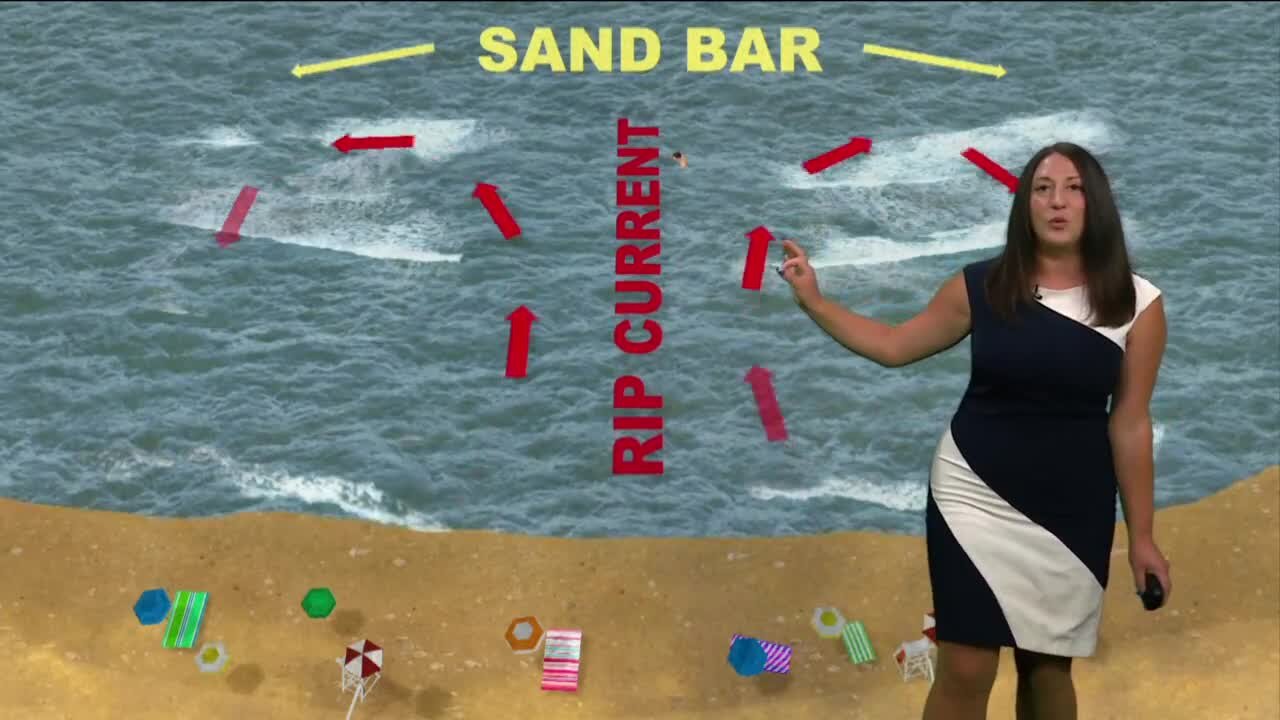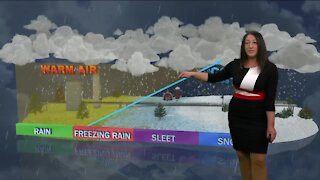Premium Only Content

Breaking it Down with
RIP CURRENTS: Strong winds create high wave action out on large bodies of water and can form an undertow, also known as a rip current. In the video about Meteorologist Brittney Merlot explains exactly how they form, how to identify them from the shoreline and ways to save your life if you are caught in one and find yourself being rapidly sucked out to sea. Rip currents are also known as undertow or riptides. They are formed by a lot of water piling up in an area, which can be either sandy or rocky shorelines, it doesn't matter. So the water water creates a narrow and strong path back out to sea, which is usually only 80 feet wide. You can identify the rip current if there is debris in the water, being rapidly moved outward to sea, rather than washing up on shore. AVOID THESE AREAS. The current is so strong it can suck you far out and into the middle of the lake. If this happens to you, swim parallel to the shoreline. This way you are escaping and swimming out of the strong current. Then you will be able to swim back to shore. But if you try to swim directly back to shore, perpendicularly, you will be fighting the current and won't win. This will tire you out and likely cause you to drown. If you cannot get out of the current, tread water, keep your head up and wave and yell for help. If you see someone struggling in the lake, call 911 for help and rescue. Time is limited and precious in these situations and can happen to anyone.
-
 3:36
3:36
WGBA
1 year agoWill it be necessary to have both the AC & the heat on during the same day??
3151 -
 1:33
1:33
WGBA
3 years agoBreaking it Down with Brittney
34 -
 1:32
1:32
WGBA
3 years agoBreaking it Down with Brittney
6 -
 1:32
1:32
WGBA
3 years agoBreaking it Down with Brittney
16 -
 1:28
1:28
WGBA
3 years agoBreaking it Down with Brittney
8 -
 25:18
25:18
WGBA
3 years agoBreaking it Down with Brittney
16 -
 25:18
25:18
WGBA
3 years agoBreaking it Down with Brittney
8 -
 1:36
1:36
WGBA
3 years agoBreaking it Down with Brittney
19 -
 1:35
1:35
WGBA
3 years agoBreaking it Down with Brittney
7 -
 2:11
2:11
WGBA
3 years agoBreaking it Down with Brittney - Tornadoes
13